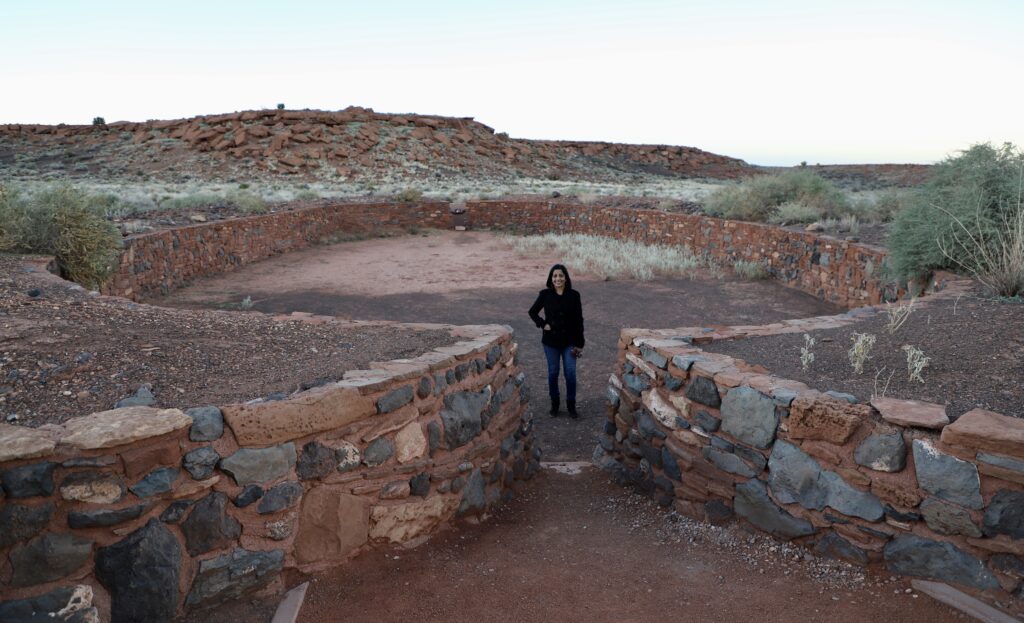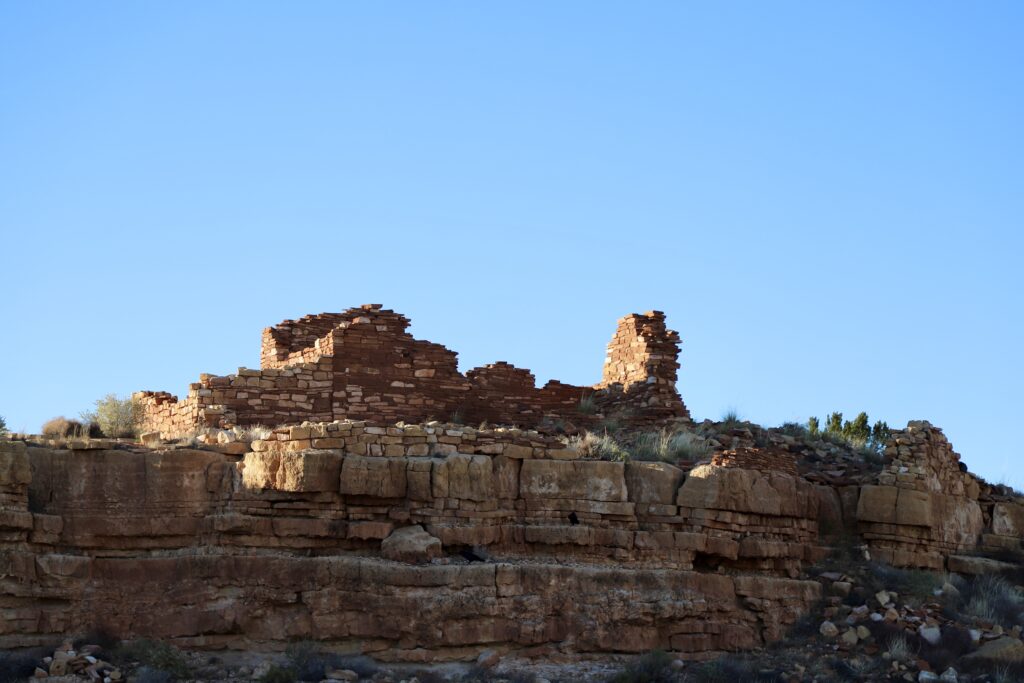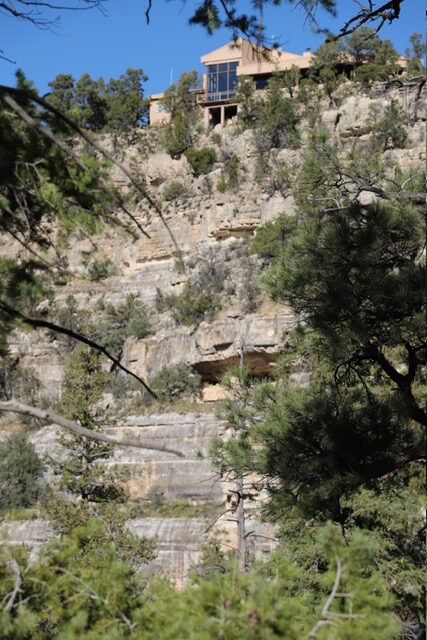We visited this place in November of 2022 driving 130km south from Page (after visiting Horseshoe Bend). Flagstaff is about 145km north of Phoenix. You will need a day or 2 to visit all the sites here.
- Sunset Crater Volcano
- Wupatki National Monument
- Walnut Canyon National Monument
- Lowell Observatory
Sunset Crater Volcano National Monument – This place is open daily sunrise to sunset. As you cruise along Interstate 40, between Flagstaff and Williams, more than 600 volcanoes dot the landscape. Sunset Crater Volcano is the youngest of these, and the landscape here, is spectacular. The volcano here last erupted around 1085 and is now protected as a national monument.
There are several short hikes through the lava fields. We did the Lava Flow Trail which is easy and one mile long and goes right up to the base of the Sunset Crater. There are gigantic volcanic chunks of lava, spread across the landscape and you can also see a collapsed lava tube that snakes its way through the field.



Wupatki National Monument – Open daily sunrise to sunset. You can combine a visit to Wupatki with Sunset Crater Volcano National Monument (see above). The entrance fee covers both places — The numerous sites within Wupatki National Monument include the Wukoki Pueblo, Wupatki Pueblo, Lomaki Pueblo, Nalakihu and Citadel Pueblos. The collection of pueblos spread over the monument offers a small glimpse into a way of life that existed here for 100 years from 1100 to 1200. The impressive structures, which in some cases stand two or more stories high, are made of stone and mud.
Wupatki Pueblo – Once a regional center for trade, this 104 room pueblo features a ball court and unique geologic blowhole. An easy 0.25 mile trail starts directly behind the Wupatki Visitor Center. You return back the same way.


Nalakihu and Citadel Pueblos – Walk up the hill past Nalakihu to Citadel Pueblo and enjoy 360 degree views of the surrounding landscape. It is an easy 0.2mile out and back trail.


Wukoki Pueblo – This is an impressive eight room structure built on top of a large sandstone pedestal. It was occupied between the early 1100s and mid 1200s CE. The trail An easy 0.2 mile round-trip to the pueblo and back.



Lomaki & Box Canyon Pueblos – Built on the edge of a small canyon, the Box Canyon and Lomaki Pueblos, appear just as they did when discovered in the late 1800s. None have been reconstructed.


Walnut Canyon National Monument – This place preserves a collection of cliff dwellings, built and occupied by the Sinagua, a pre-Columbian cultural group that lived in Walnut Canyon from about 1100 to 1250 AD. during the 12th and 13th centuries.
The canyon rim is at an elevation of 6,690 ft (2,040 m); the canyon’s floor is 350 ft (110 m) lower. From the Visitor Center, you can look out over the canyon and to the ruins on the far wall. The best way to experience the monument and see the ruins is on the one-mile Island Trail, which begins directly from the Visitor Center. Stairs take you down the canyon wall about 185 feet, where you can walk below the overhanging walls and through a series of reconstructed ruins.





This place is open daily from 9am – 4:30pm. There is no access to the canyon, visitor center, park trails and viewpoints when the park is closed.
Lowell Observatory – Among the oldest of astronomical observatory in the United States, it was established in 1894 and designated a National Historic Landmark in 1965. It was at the Lowell Observatory that the dwarf planet Pluto was discovered in 1930 by Clyde Tombaugh. The observatory operates several telescopes at three locations in the Flagstaff area.
Lava River Cave – We did not have time to visit this place but it maybe worth a stop. The cave is located approximately 14 miles from Flagstaff along paved and gravel roads. The cave is one mile long and is not a prettified tourist attraction. If you are planning to go in and down, make sure to bring some form of light source as there is no lighting and no guide.
Once you climb down inside and walk a short distance, you’ll see stone icicles, along with other unique rock features that give the floor the appearance of a frozen river. In some areas, the cave roof is 30 feet high and in other areas, the tube splits into two tubes that eventually rejoin. The cave is constantly cold, around 35 to 40 F, and the rocks cab be sharp and slippery, so wear sturdy hiking boots.